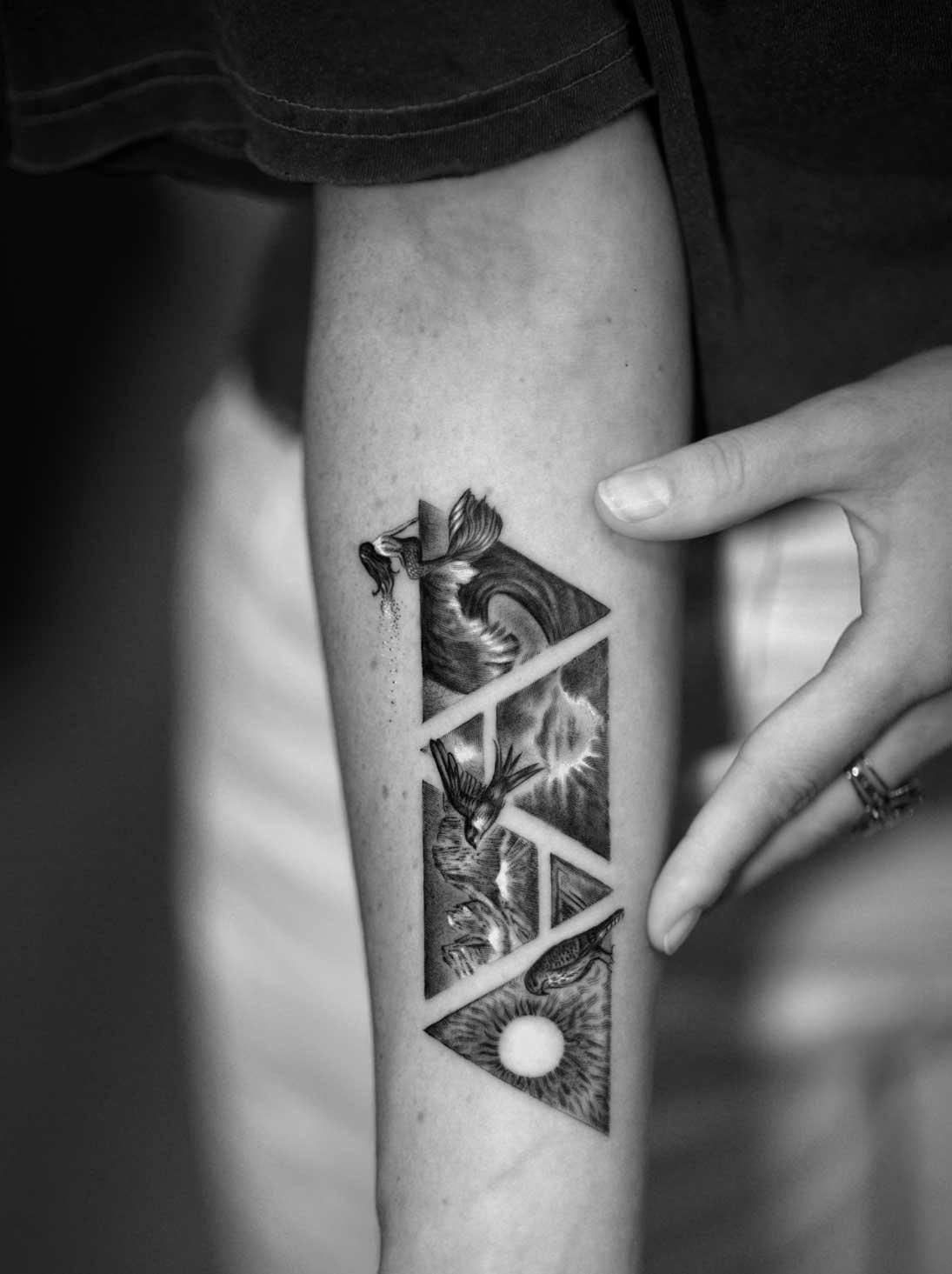The Rich Heritage of Nautical Tattoos
Made by @Alessandro_Capozzi
The practice of tattooing has been a defining element of human culture for thousands of years, but perhaps nowhere has it developed such distinct meaning and tradition as in maritime culture.
Since the 17th century, nautical tattoos have evolved into a sophisticated visual language, featuring intricate depictions of marine life, vessels, navigational tools, and mystical sea creatures. Each design carries layers of meaning, from practical significance to supernatural protection.
Historical Evolution
Made by @Alessandro_Capozzi
Before modern transportation, the seas were humanity's primary gateway to exploration. The pivotal moment in Western maritime tattooing came during Captain James Cook's Pacific voyages, where his crew encountered the sophisticated tattoo practices of Polynesian cultures.
This cultural exchange would forever transform Western tattooing.
The practical reality of shipboard life made tattoos the perfect souvenir - as sailors often noted, "You can't carry much aboard ship, but you can always carry your tattoos." By the late 1700s, tattooing had become so prevalent that records show approximately 33% of British sailors and 20% of American sailors bore at least one tattoo.
The 19th century saw the emergence of what we now call "American Traditional" style, with Sailor Jerry (Norman Keith Collins) becoming its most influential pioneer. His work in Hawaii after World War II defined the bold, clean aesthetic that characterizes maritime tattoos: strong black outlines, vivid colors, and straightforward designs that remain visible even as they age.
Iconic Maritime Designs
1. The Anchor Tattoo
The anchor stands as perhaps the most recognizable nautical tattoo, representing both physical and emotional stability. Traditionally earned after successfully crossing the Atlantic Ocean, an anchor tattoo signifies:
Safe return from treacherous voyages
Steadfastness and reliability
Connection to loved ones (often incorporated with name banners)
Professional pride in seamanship
Many sailors would add elements like roses, ships, or religious symbols to personalize their anchor designs.
Realizzato da @Alessandro_Capozzi
2. The Shark Tattoo
As apex predators of the ocean, sharks represent power and fearlessness in nautical tattoo tradition. These designs often symbolize:
Survival of dangerous waters
Adaptation to hostile environments
Unwavering determination
Natural authority and strength
Modern interpretations often incorporate elements of marine biology accuracy while maintaining the traditional bold style.
Realizzato da @Alessandro_Capozzi
3. The Mermaid Tattoo
Mermaids represent the complex relationship between sailors and the sea, embodying both allure and danger. These tattoos typically feature:
Pin-up style artistic elements
Classical mythological references
Symbolic warnings about oceanic dangers
Reminders of female companionship during long voyages
Traditional designs often showed mermaids with mirrors or combs, symbols from classical mythology.
Via Pinterest
4. The Swallow Tattoo
Known as "milestone tattoos," swallow designs carry specific meaning based on their number and placement:
One swallow: 5,000 nautical miles traveled
Two swallows: 10,000 nautical miles traveled
Placement near collar bones: Protection against drowning
Direction of flight: Homeward journey
Sailors believed swallows would carry their souls to heaven if they died at sea.
Via Pinterest
5. The Nautical Star/Compass Tattoo
This five-pointed star design served both practical and symbolic purposes:
Navigation guidance
Finding one's way home
Protection from misfortune
Professional accomplishment
Direction in life
Modern versions often incorporate actual compass rose designs and more intricate shading techniques.
Via Pinterest
6. The Ship's Wheel Tattoo
The helm represents control and guidance through life's challenges:
Personal responsibility
Life direction
Leadership abilities
Navigating fate
Making crucial decisions
Traditional designs often included rope elements and directional markers.







